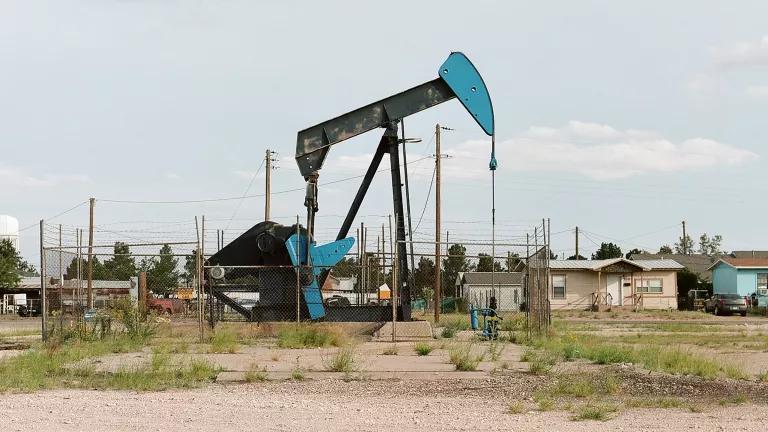What the Fed District Reserve Banks Should Do About Climate
The Federal Reserve and its 12 regional District Banks—tasked with safeguarding the overall financial system and individual financial institutions—must incorporate climate change economic risk into their oversight duties.
Written with Peter Trousdale
The Federal Reserve has a lot on the front burner right now—from controlling high inflation to staving off an economic recession. But one issue, and it’s in line with the Fed’s core mission, should move up in priority. The issue is accounting for, helping to manage and safeguarding the economy from the growing risks posed to the financial system from climate change.
We’re releasing a new report urging that the Federal Reserve, and its 12 regional District Banks—tasked with safeguarding the overall financial system and individual financial institutions—must incorporate climate change economic risk into their oversight duties. In the report, How Regional Federal Reserve Banks Can Contend with Economic Risk from Climate Change, we set forth specific recommendations for steps the Fed—and particularly the District Banks—can take to integrate climate consideration.
When most people hear about the Fed—shorthand for the Federal Reserve System—they think of the chair (currently Jerome Powell) or perhaps the Board of Governors. But the Fed System also includes 12 District Federal Reserve Banks, whose districts taken together cover the entire US. The District Banks supervise and examine banks within their districts and make loans to them, provide data and research to the Board of Governors, and are an important part of the local communities they serve. The Fed’s—including the District Banks’—mandate includes protecting the financial system and individual banks, as well as maintaining stable prices, maximizing employment, and promoting community development. Achieving all of these mandates requires sufficient attention to climate change.
Climate change is increasing global temperatures, altering weather patterns, and increasing the frequency and intensity of natural disaster events. Climate scientists are telling us it is likely to get worse. In the coming years and decades, we are likely to see worsening hurricanes, droughts, and wildfires, as well as declines in fossil fuel businesses as we transition to a low carbon economy.
In addition to the direct human harm, climate change will threaten our economy—both individual companies and the financial system as a whole. Averting—or at least, minimizing—this threat is squarely within the Fed’s and the District Banks’ job description.
In our report, we make 4 specific recommendations about steps the District Banks should take to address climate change economic risk:
Perform research, data collection, and public outreach at the District Bank level on climate economic risk. The District Banks should collect data and conduct research on the economic effects of climate change, focusing on conditions within their districts, including broken down by community, income, and race to ensure that the economy works for all people.
Spotlight the economic effects of climate change in Beige Books. The District Banks should augment their Beige Book information collection by asking their sources specifically about the climate change–related economic effects of events such as hurricanes, drought, and wildfires and about adaptation measures responders are implementing.
More thoroughly consider climate change risk in price stability research. The District Banks should deepen their research into price expectations in the context of climate change and enhance their climate change–related data collection (including for the Beige Book) and their pricing and inflation modeling.
Address the disproportionate impact of climate change on low-income communities and communities of color. The District Banks should collect the data and conduct the qualitative research—broken down by community, income, and race—necessary to provide guidance to policymakers and enable the Fed to carry out this aspect of its mandates.
The economic effects of climate change will not be limited to coastal areas, farmlands, forests, and oil fields. Our economy is interconnected. Supply chains and businesses throughout the country will be affected. The Fed and the District Banks must marshal all of their tools to enable the financial system and individual institutions to mitigate climate change effects and build up resilience.




